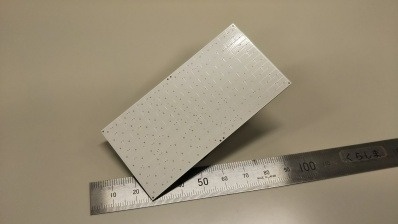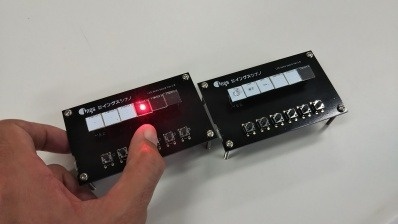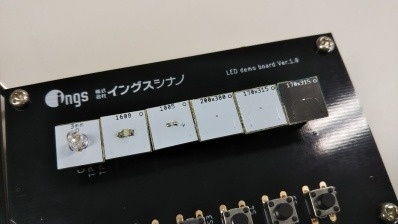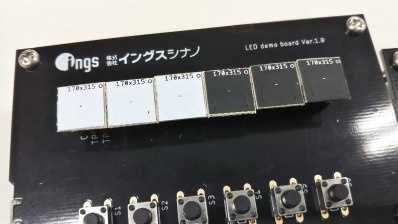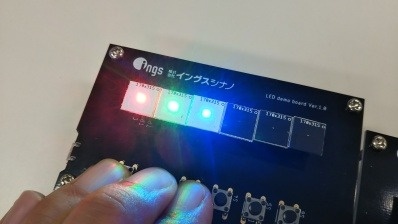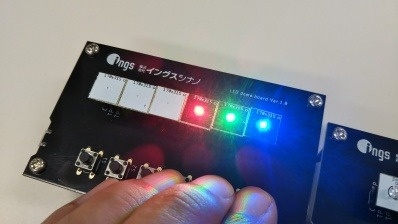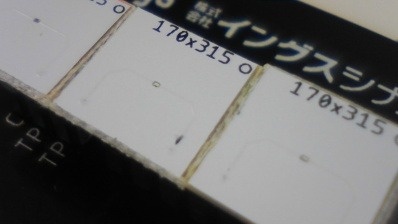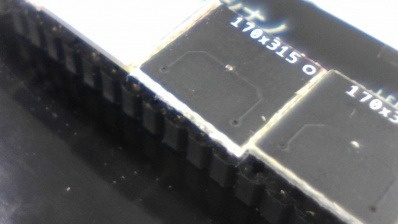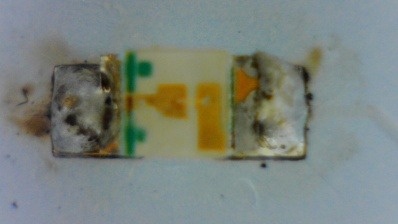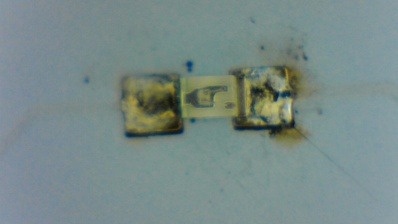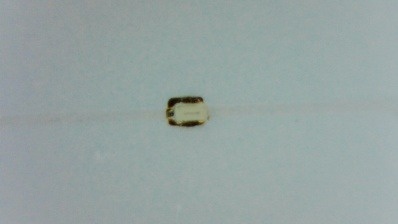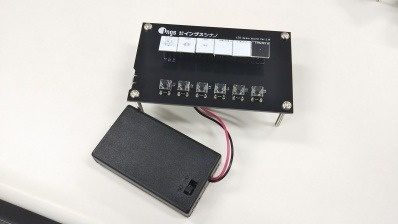Mini LED 8x16 board production part 2
Now, bonding the LED on the completed LED bonding board.
Our miniLED bonding machine requires an alignment mark around the board. This time, as shown in the photo below, they were placed at the four corners of the board and the center of the long side. The area around the alignment mark and the LED bonding part cannot form a resist, so it cannot be a pure white board.
Using this alignment mark, the LED is bonded with a position accuracy of ± 25um (3σ). Therefore, if the alignment mark is not round or scratched, a bonding error may occur.
± 25um is a considerable position accuracy, but since the LED chip itself is 100 to 200um and the connection PAD does not have a 100um gap, some chips may not be able to connect if the accuracy is worse than this. Naturally, the pattern accuracy of the board is also required to be high. In the demo machine, we have devised a pattern design so that even an inexpensive FR-4 board can be used.

Mini LED bonding board (around the alignment mark)
t is an expansion of the LED bonding part.
You can see that the bare chip LED is bonded in the resist opening.
The size of this LED is 0.2 x 0.38 mm. It becomes almost invisible to the naked eye when it is a little away. Compared to the LED size, the size of the copper foil gap and through hole on the board is conspicuous.
A special solder material is used to connect the LED and the board. Print it in the same way as general cream solder and place the chip on it. It is also important to control the coating amount, because if the amount of solder printing is large, it will slip when the chip is placed.

Expansion of mini LED bonding part
The photo below shows the LEDs bonded at a 5mm pitch from a distance.
This time, the resist was applied once because it was the standard specification of the board manufacturer. If you look closely at the photo, there is a difference between the white part without the copper foil and the white color on the copper foil, and the top of the copper foil is a little pink. If you want more whiteness, you may need to take measures such as printing the resist twice.

Mini LEDs lined up at 5mm pitch
The number of boards we made is 128 chips / board, which is small and easy to install.
Therefore, we were able to use the board we made to practice engineers who handle new mini LED bonding machines.
Connect the power supply to the anode terminal and cathode terminal on the back of the board and check that it lights up. Since it is connected in a matrix, somewhere will shine when you hit the probe appropriately.
Next is the lighting of the whole.

